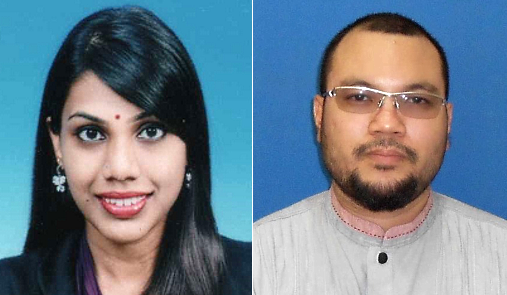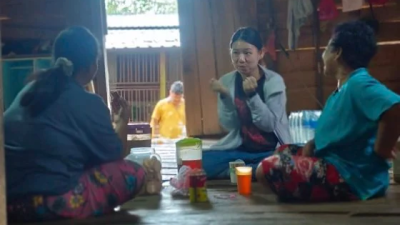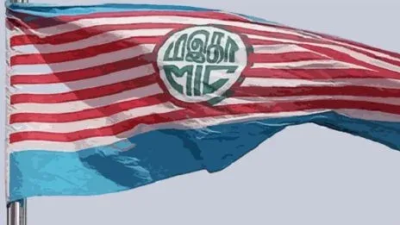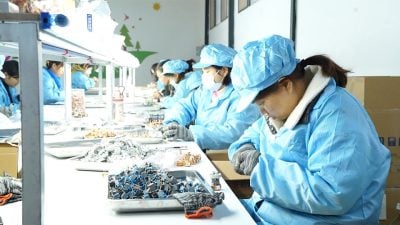By Dr Kalaashini Ramachandran / Dr Syed Abdul Khaliq

Nothing is more important to a mother than the health of her baby.
Mothers aim to provide the best, and undeniably breast milk is the ideal source of nutrition for all newborn babies, especially those vulnerable infants who are premature, infants born with low birth weight (LBW) and infants admitted to the Neonatal Intensive Care Unit.
The World Health Organization strongly recommends for all babies to be exclusively breastfed up to six months of age, and when mother’s own milk is not available, donor’s milk is the next best alternative1.
A child that is breastfed experiences healthier neurodevelopmental outcome, a decreased risk of infections and asthma, as well as lower likelihood of developing diabetes mellitus or obesity in their latter part of life.
Studies have found that the use of donor’s milk in the absence of mothers on milk is almost as highly protective and beneficial by minimizing the risk of developing necrotizing enterocolitis, late onset sepsis, childhood food intolerance and hospital length stay among the vulnerable infants2.
These factors will lead to a lower mortality and morbidity rate among our newborns and infants.
In this era where ‘breast is the best’ slogan is blazoned all over the media and among the health community, some mothers suffering from lactation failure or has some contraindication to breastfeed are not able to provide their breast milk to their infants3.
Historically, the most practical way to ensure these babies get their nutrition before the introduction of formula milk and feeding bottles is to engage a wet nurse.
This has set the base and platform for the current practice of breast milk sharing and human milk banks around the world.
The term “wet nursing” refers to any type of breastfeeding provided by someone other than the infant’s biological mother, whereby the infant can either directly feed from the wet nurse or consumed the expressed breast milk from her4.
During the earlier days, wet nursing was categorized as a job and women were employed and paid for their services.
It is agreeable that the modern-day equivalent to a wet nurse is a mother who donates or shares her breast milk.
An increased awareness on the benefits of breastfeeding coupled with the online platforms and wide milk sharing network, mothers who are determined to feed their babies with breast milk but not able to do so can now obtain it from a donor mother.
Like in many Western countries, Malaysian mothers have also been actively practicing this via the many online platforms like ‘Breast Milk Donation Malaysia’ and ‘Human Milk 4 Human Babies Malaysia’.
Breast milk sharing is now gaining popularity and despite the established benefits of breast milk, this practice is not risk-free.
There are possibilities of disease transmission and contamination when milk collection, storage and transportation process is not handled hygienically.
Besides this, establishing milk kinship among Muslim mothers and babies should also be addressed sensitively.
The ultimate goal is for us the advocate and practice safe breast milk sharing among the mothers in need, in the absence of a culturally and religiously abiding human milk bank.
Setting the four pillars of safe breast milk sharing as a guide, parents, healthcare providers and the community can work towards and achieve safe breast milk sharing practices5.
1. Informed choices: Donor and recipient parents should consider and share all the relevant information and objectively evaluate the options as well as the consequences prior to making any decision.
Respecting the need to identify the donor and discuss the possibility of milk kinship and milk siblings should also be done.
Parents’ decision and their personal choices is important and should be supported by the community.
2. Donor screening: This is important to reduce the possibility of contamination and diseases transmission during milk sharing.
Donor mothers must be transparent on their lifestyle especially in relation to their diet, medications, smoking or alcohol and hygiene habits.
It is also advisable for mothers to do an infective screening to further reduce the risk.
3. Safe handing: Parents must be educated on proper handling, collecting and storage of the expressed breast milk to avoid any bacterial contamination.
Mother should also inspect for any nipple lesion or blisters prior to pumping.
It is also vital to properly wash and sterilize the equipment used.
4. Home pasteurization either via the holder method or flash heating method using a single bottle pasteurizer is also crucial.
Mothers who have a well-established donor-recipient relationship may otherwise opt to use raw milk to retain many nutritional values.
Informal milk sharing is now being practiced globally. We should not criticize mothers who are not able to breastfeed their babies but help them to reach out the to the next available option, breast milk sharing.
By supporting safe breast milk sharing practices, we can all play our role in contributing to improve the infants, community and in the long run, global health.
Sharing your liquid gold may just safe a baby’s life.
References:
1. WHO (2003). Global Strategy for Infant and Young Child Feeding. Geneva. doi:
2. Quigley, M. A., Kelly, Y. J., & Sacker, A. (2007). Breastfeeding and hospitalization for diarrheal and respiratory infection in the United Kingdom Millennium Cohort Study. Pediatrics, 119(4), e837–e842.
3. Chang, P.-C., Li, S.-F., Yang, H.-Y., Wang, L.-C., Weng, C.-Y., Chen, K.-F., . . . Fan, S.-Y. (2019). Factors associated with cessation of exclusive breastfeeding at 1 and 2 months postpartum in Taiwan. International Breastfeeding Journal, 14(1), 18. doi:10.1186/s13006-019-0213-1
4. Thorley V. (2009). Mothers’ experiences of sharing breastfeeding or breastmilk co-feeding in Australia 1978-2008. Breastfeeding review: professional publication of the Nursing Mothers’ Association of Australia, 17(1), 9–18.
5. Walker, S., & Armstrong, M. (2012). The four pillars of safe breast milk sharing. Midwifery today with international midwife, (101), 34–37.
(Dr Kalaashini Ramachandran and Dr Syed Abdul Khaliq, Neonatologist, Paediatric Department, Sultan Ahmad Shah Medical Center @IIUM.)
ADVERTISEMENT
ADVERTISEMENT


































